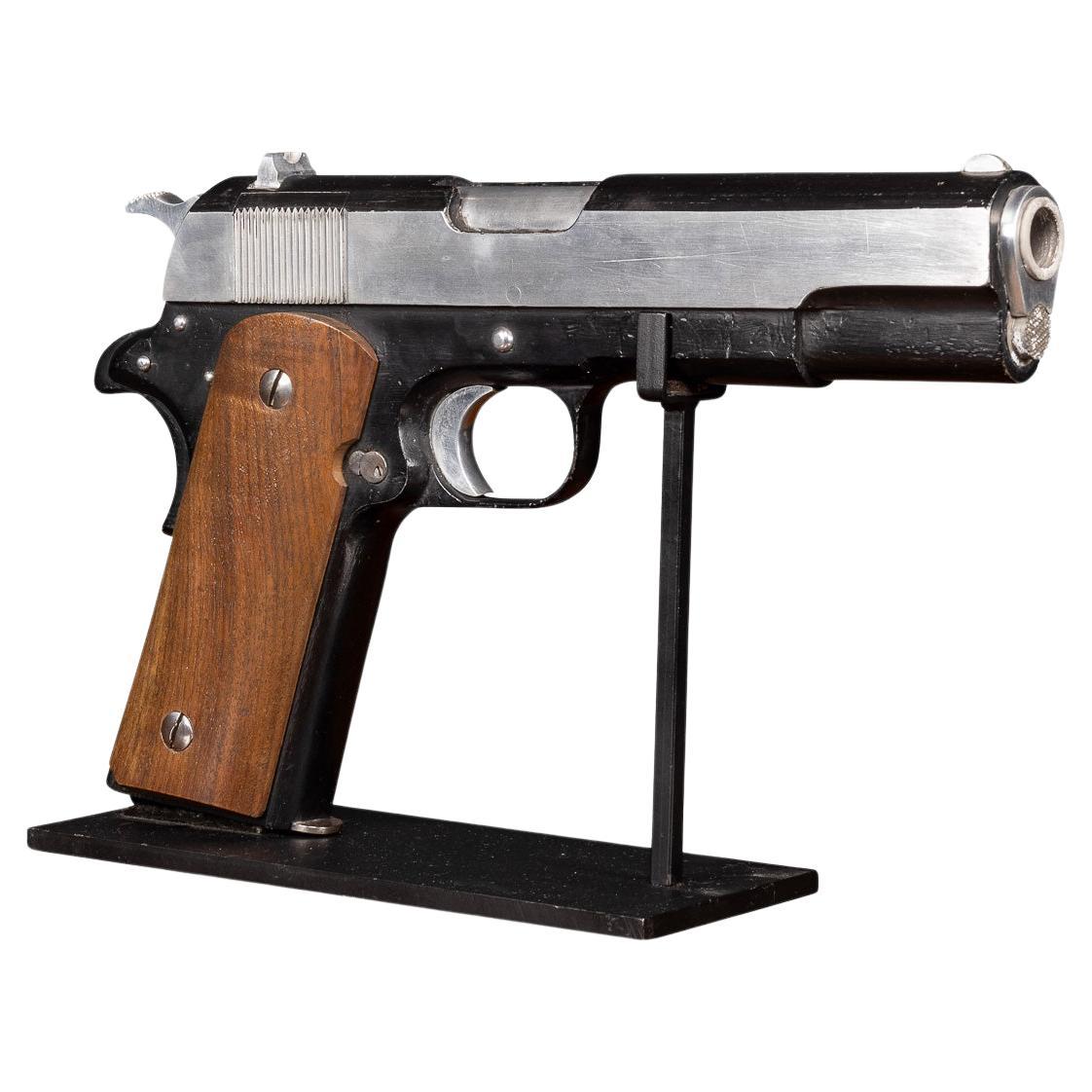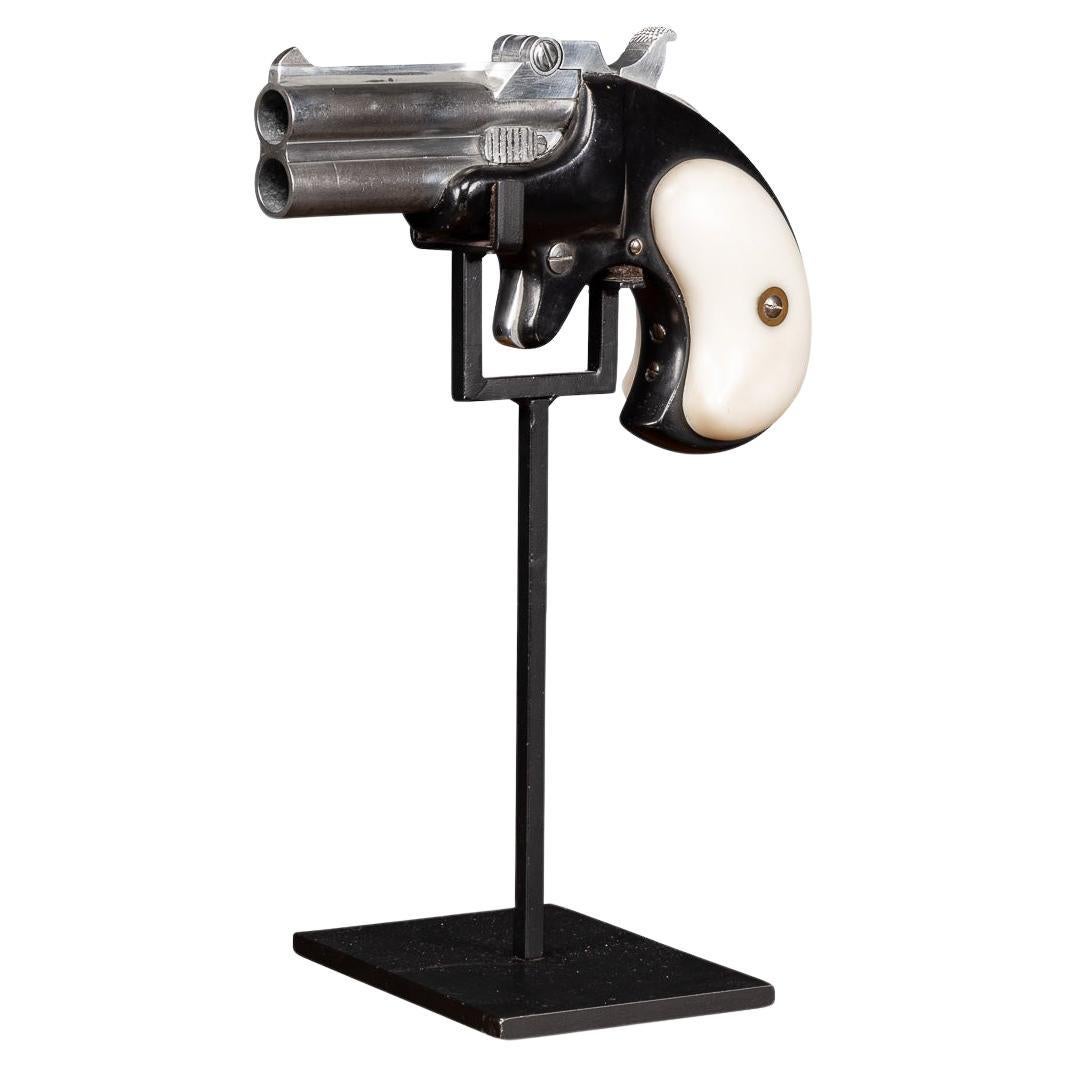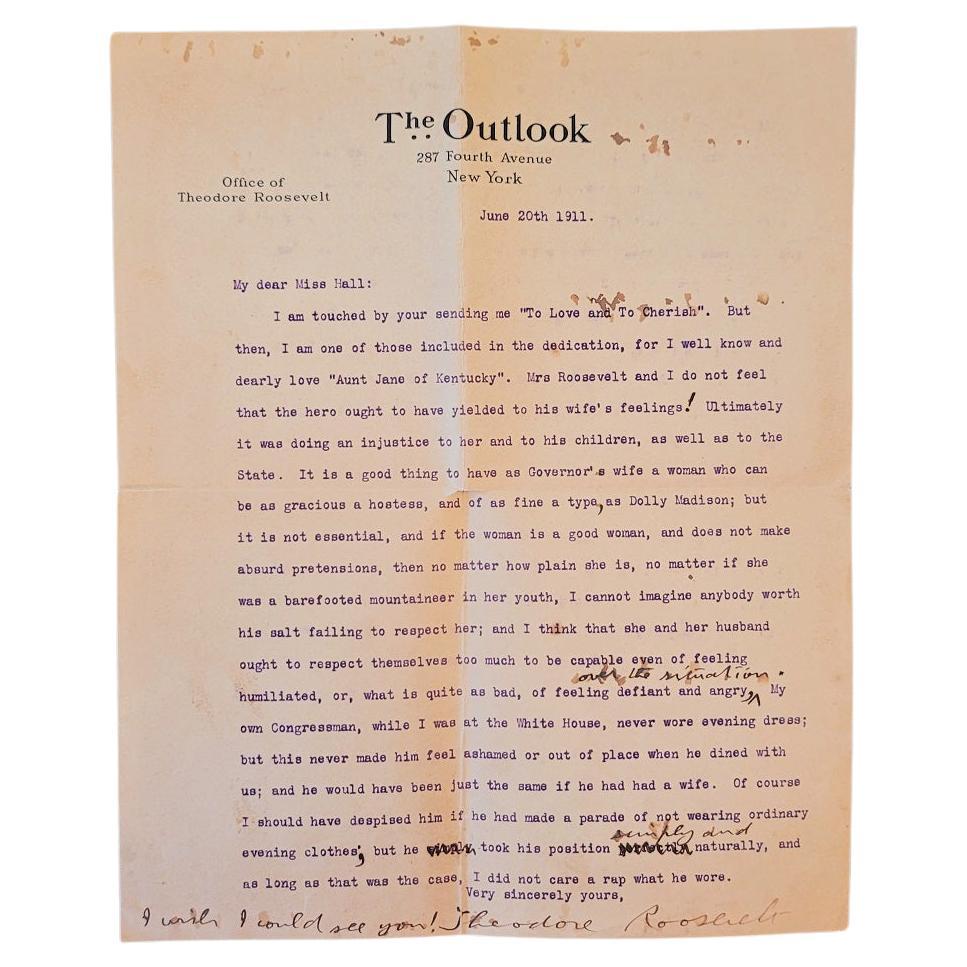Items Similar to Monumental Model Of A M1911 Colt Government Handgun
Want more images or videos?
Request additional images or videos from the seller
1 of 21
Monumental Model Of A M1911 Colt Government Handgun
About the Item
This enormous model of the M1911, standing over a meter tall, also known as the Colt 1911 or Colt Government for Colt-produced models, stands as an iconic firearm. This single-action, recoil-operated, semi-automatic pistol is chambered for the .45 ACP cartridge. Its official U.S. military nomenclature evolved over the years, starting as the Automatic Pistol, Caliber .45, M1911 when first adopted in March 1911, transitioning to the improved M1911A1 in 1926, and finally becoming the Pistol, Caliber .45, Automatic, M1911A1 during the Vietnam War era.
These are sculptural models of firearms, intended solely for display purposes. These models are typically larger than real firearms and are not functional. They are not to be mistaken for working firearms or capable of discharging any projectiles.
CONDITION
In Great Condition - No Damage.
SIZE
Height: 107cm
Width: 130cm
Depth: 20cm
Base Width: 46 cm x 29 cm
- Dimensions:Height: 42.13 in (107 cm)Width: 51.19 in (130 cm)Depth: 7.88 in (20 cm)
- Materials and Techniques:
- Place of Origin:
- Period:
- Date of Manufacture:circa 1911
- Condition:Wear consistent with age and use. Minor fading. In Great Condition - No Damage.
- Seller Location:Royal Tunbridge Wells, GB
- Reference Number:
About the Seller
5.0
Platinum Seller
These expertly vetted sellers are 1stDibs' most experienced sellers and are rated highest by our customers.
Established in 2014
1stDibs seller since 2015
371 sales on 1stDibs
Typical response time: <1 hour
- ShippingRetrieving quote...Ships From: Sherring, United Kingdom
- Return PolicyA return for this item may be initiated within 14 days of delivery.
More From This SellerView All
- Large Model Of A M1911 Colt Government HandgunLocated in Royal Tunbridge Wells, KentThis large model of the M1911, standing over a meter tall, also known as the Colt 1911 or Colt Government for Colt-produced models, stands as an iconic firearm. This single-action, r...Category
20th Century American Arms, Armor and Weapons
MaterialsMetal
- Large Model Of A 95 Double Deringer HandgunLocated in Royal Tunbridge Wells, KentThis large model of the Model 95 Double Deringer. From 1866 until the cessation of production in 1935, Remington Arms crafted in excess of 150,000 Model 95 over-under double-barreled...Category
20th Century Arms, Armor and Weapons
MaterialsMetal
- Large Model Of A Smith & Wesson 29 Magnum HandgunLocated in Royal Tunbridge Wells, KentA large model of a Smith & Wesson Model 29, a double-action revolver, features a six-round capacity and is chambered for the .44 Magnum cartridge. This esteemed firearm is proudly ma...Category
20th Century American Models and Miniatures
MaterialsMetal
- 20th Century Polished Aluminium Model Of A Bomber Airplane, c.1950Located in Royal Tunbridge Wells, KentA Stunning mid-20th century model of an bomber airplane, made of polished aluminum, standing on an elegant art deco style stand. CONDITION In Great condition - No damage, just gener...Category
20th Century British Art Deco Aviation Objects
MaterialsAluminum
- 20thC Mahogany Model Of A Hawker Siddeley Nimrod Airplane c.1960Located in Royal Tunbridge Wells, KentA Stunning mid-20th Century large model of the Hawker Siddeley Nimrod made in the late sixties, model on a metal stand. This item makes for a fantastic conversation piece, suitable f...Category
20th Century British Aviation Objects
MaterialsMetal
- 20th Century Dutch Brass Model of a Water Pump, c.1930Located in Royal Tunbridge Wells, KentAntique 20th century Dutch brass model of a wind propelled water pump. It was created in a smaller scale perhaps by company salesmen to show prospective customers exactly how it work...Category
20th Century Dutch Models and Miniatures
MaterialsBrass
You May Also Like
- Vintage Colt Government Handgun Lighter, 1980s JapanLocated in Los Angeles, CAVintage table lighter in the shape of a Colt handgun. Works perfectly. Modeled after a Colt Government handgun. Made of metal in Japan. Good working condition and fun object. Sold ou...Category
Vintage 1970s Japanese Tobacco Accessories
MaterialsMetal
- Rare Monumental Italian Carved Carrara Marble Model of a CathedralLocated in New York, NYA Rare and Monumental Italian Carved Carrara Marble Model of a Cathedral, Rome, 19th century, circa 1840. Possibly a representation of Cathedral of Santa Maria del Fiore in Florence Italy. The Italian Renaissance is renowned for its magnificent works of art and architecture, which are admired to this day for their grandeur and intricate details. Among the most impressive examples of this era are the rare and monumental carved Carrara marble models of cathedrals...Category
Antique 19th Century Italian Gothic Architectural Elements
MaterialsCarrara Marble
- Important Teddy Roosevelt Letter of June, 1911By Theodore RooseveltLocated in Dallas, TXPresenting a very important Teddy Roosevelt Letter of June 1911 . On ‘The Outlook’ letterhead. Typed and personally signed and amended by President Theodore Roosevelt. Dated June 20th 1911. What makes this letter so important is the author, the office and the content. It refers to the beliefs and opinions of the then President and First Lady (Edith) towards the women’s sufferage and empowerment movement that was the ‘hot topic’ of the time. It is addressed to Eliza Calvert Hall/Obenchain who was a well known author at the end of the 19th Century and Early 20th Century. In 1905, Teddy referred to her book “Aunt Jane of Kentucky’ in a speech and recommended that every man in America should read it to understand ‘the plight of their womenfolk’. He regularly corresponded with her and we have a number of those letters in our collection. It appears that both he and Edith became big fans of Mrs Hall/Obenchain who was also heavily involved in the Suffragist movement. The letters also provide a fascinating and historic record of Roosevelt’s personal beliefs and feelings on female empowerment. The Letter Reads: The Outlook 287 Fourth Avenue New York Office of Theodore Roosevelt June 20th, 1911 “My dear Miss Hall: I am touched by your sending me “To Love and To Cherish”. But then, I am one of those included in the dedication, for I well know and dearly love ” Aunt Jane of Kentucky”. Mrs. Roosevelt and I do not feel that the hero ought to have yielded to his wife’s feelings ! Ultimately it was doing an injustice to her and to his children, as well as to the State. It is a good thing to have a Governor’s wife a woman who can be as gracious a hostess, and of as fine a type, as Dolly Madison...Category
Early 20th Century American American Classical Historical Memorabilia
MaterialsPaper
- Decorative Antique MODEL CARS, Rare Rolls Royce Cream Car Franklin Mint 1911 UKLocated in Hampshire, GBArising from the collaboration of the automobile brands, this exclusive antique model car is a 1:24 scale model that took over 4,000 hours to develo...Category
Vintage 1910s British Hollywood Regency Models and Miniatures
MaterialsMetallic Thread, Aluminum, Berlin Iron, Brass, Bronze, Cut Steel, Foil, ...
- Antique Map of the Malay Archipelago by Walker, 1911Located in Langweer, NLAntique map titled 'Malay Archipelago'. Old map of the Malay Archipelago including Borneo, Celebes, New Guinea, Java, Timor and others. This map ...Category
Early 20th Century Maps
MaterialsPaper
- Colorado State Flag, Made of Silk, Ca 1911-1920Located in York County, PACOLORADO STATE FLAG OF EXCEPTIONAL QUALITY, MADE OF SILK, CIRCA 1911-1920’s, EXTRAORDINARILY RARE IN THIS PERIOD AND THE EARLIEST EXAMPLE THAT I HAVE EVER ENCOUNTERED Early state flags are few and far between. While I am asked for them constantly, most states did not actually have official flags until the 20th century. On May 6th, 1911, Colorado became among the last to adopt a design. The project of doing so was spearheaded by the Denver Chapter of the Daughters of the American Revolution. The bill was introduced by Senator W.H. Sharply and adopted by the Eighteenth General Assembly. The artwork was the product of A.C. [Andrew Carlisle] Carson, President of the Ohio Society of Colorado. The meanings behind the elements in the design are as follows: The large letter "C" stands for Colorado and simultaneously for the Centennial State (Colorado entered the Union in 1876, the year in which our nation celebrated its 100th anniversary of independence), as well as the Columbine State (reflecting the state flower). The red color is included due to the fact that the word Colorado translates to scarlet or red in Spanish. The circle represents the sun, while the gold color symbolizes all-the-year sunshine, Colorado’s status as the greatest gold state, and one Columbine color. It was also included so that the Colorado state flag would have one more color than the U.S. flag. The color white reflects Colorado’s status as the greatest silver state, its eternal mountain snow, and one Columbine color. Lastly, the shade of Yale blue symbolizes all-the-year blue sky and one Columbine Color. Members of the D.A.R. were proud to note that this was also their color. Made sometime between the initial year of the adoption of this design and the 1920’s, this particular flag is the earliest Colorado example that I have ever encountered. The blue and white bars, red “C,” and golden circle are a’’ made of silk taffeta. This was a costly fabric, reserved for the best material a flag-maker produced. The flag is constructed in the manner of a battle flag, to be carried on foot. Squarish in its overall profile, silk was the fabric of choice for flags employed in this function, due to the fact that it was light weight, and thus practical for hand-carrying, while simultaneously formal in appearance, appropriate for the sort of ceremonial use that military presentation often demands. The style of the hoist is also typical for field or parade use. Here the fabric was rolled over to form an open sleeve, through which a wooden staff could be inserted. The sleeve is lined on the interior with black cotton. Leather tabs, at the top and bottom, fit over metal posts on the staff, designed to accept them, to fix the flag in its proper position. The bars were pieced and joined with lineal machine stitching. The hoist and fly ends were finished and hemmed by the same method. The devices are double-appliquéd (applied to both sides) with a machine buttonhole / blanket stitch. Though machines that produced buttonholes were, remarkably, available alongside the earliest standard machines, in the 1850’s and 60’s, the use of this sort of stitch in a running format, for appliqué work, remained highly unusual, even as late as the first half of the twentieth century, probably because it used a ton of thread when compared to the zigzag or satin stitch. It could be expected to appear more often in the hands of a maker of very fine flags, that employed embroidery machines and commissioned custom, fancy work of all sorts. Though unsigned—in no way uncommon in early examples, which were seldom signed—that is precisely the sort of firm that produced the Colorado flag...Category
Early 20th Century American Political and Patriotic Memorabilia
MaterialsSilk
Recently Viewed
View AllMore Ways To Browse
Nesmuk Knife
Fireman Hat
Thor And Nema
Authentic Antique Suit Of Armor
Browning Training Gun
Islamic Helmet
Antique Hand Forged Knife
Antique Leather Gun Case
Double Barrel Shotgun
Raid Medway
Antique Cannon Ball
Antique Mughal Dagger
Bowie Knife
Broad Arrow Copper
Smith And Wesson
18th Century Flintlock Pistols
Adams Caledonia
Antique Blunderbuss





